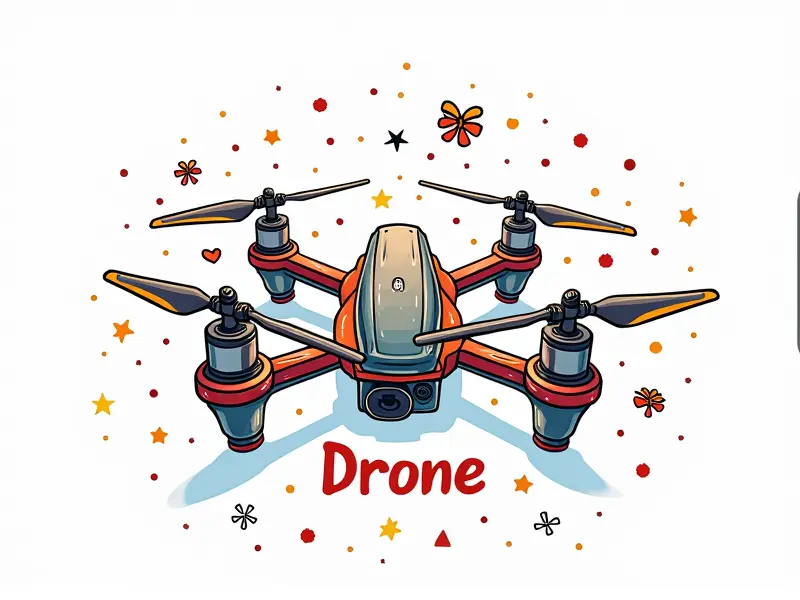What is PNP in drone components?

What Does PNP Mean in Drones?
PNP, which stands for Plug-N-Play, refers to a type of drone or RC aircraft kit that includes most of the essential components but leaves out certain parts like the receiver and battery. This setup allows hobbyists to customize their drones according to specific needs such as flight time, performance, and maneuverability.
Understanding PNP Drone Components
A typical PNP drone kit usually comes with a frame, motors, ESCs (Electronic Speed Controllers), propellers, and sometimes a battery eliminator circuit (BEC). The missing components are typically the receiver, transmitter, and battery pack. This setup provides flexibility for users to choose high-quality parts that fit their specific requirements.
Explaining PNP Systems in FPV Racing
In the context of First-Person View (FPV) racing drones, PNP systems are highly favored due to their modularity and customization options. Users can tailor their setup with high-performance receivers, lightweight batteries, and other critical components that enhance speed and agility during races.
Customization in FPV Racing
- High-Sensitivity Receivers: Essential for maintaining signal integrity during fast-paced racing.
- Lithium Polymer Batteries (LiPo): Provide the necessary power density and weight balance for optimal performance.
- Tuned ESCs: Ensure smooth throttle response and efficient motor control.
Unpacking the Benefits of PNP Airplanes
The advantages of using PNP systems extend beyond drones to include RC airplanes. These benefits include cost-effectiveness, ease of maintenance, and enhanced flight performance through component selection.
Economic Efficiency
- Cost Savings: Buying individual components separately can be cheaper than purchasing a pre-assembled kit.
- Budget Allocation: Allows users to invest more in high-end parts like receivers and batteries, which offer significant performance improvements.
Maintenance and Upgrades
- Easier Component Replacement: If a part fails or needs upgrading, it can be easily swapped without affecting the rest of the system.
- Scalability: As technology advances, users can upgrade individual components to stay current with the latest advancements in RC aviation.
Mastering PNP Setup in Drones
Mastery over setting up a PNP drone involves understanding how each component interacts and contributes to overall performance. This includes proper installation of ESCs, connecting the receiver, and ensuring correct battery integration.
Step-by-Step Guide to PNP Drone Assembly
- Install ESCs: Connect ESC wires to motors and balance connector to LiPo pack. Secure ESCs using zip ties.
- Connect Receiver: Attach the receiver module to the frame, ensuring it is properly positioned for signal reception.
- Battery Integration: Install the battery in a secure holder and connect its wires to the BEC or ESC if applicable.
The Basics of PNP RC Systems
The fundamental principle behind PNP systems is their modular design, which allows for customization without compromising on functionality. This makes them ideal for both beginners and experienced hobbyists looking to optimize their builds.
Key Components Explained
- Frame: Provides structural support and aerodynamic design.
- Motors: Propel the aircraft, with options ranging from low-speed cruising to high-performance racing motors.
- ESC (Electronic Speed Controller): Manages motor speed based on input signals from the receiver.
- Battery Pack: Supplies power; typically LiPo batteries are used due to their energy density and weight-to-power ratio.
- Receiver: Receives control signals from the transmitter, allowing for remote operation of the aircraft.
Setting Up Your First PNP Drone Kit
Starting with a PNP drone kit can be an exciting venture into RC aviation. Here’s how to get started:
Selecting Components
- Choose Compatible Parts: Ensure that all components are compatible and fit well within the frame.
- Budget Considerations: Allocate funds for high-quality parts like receivers, ESCs, and LiPo batteries.
Assembly Tips
- Follow Manufacturer Guidelines: Refer to manuals or online tutorials provided by manufacturers for assembly instructions.
- Test Before Flight: Conduct ground tests with a transmitter and receiver setup before attempting first flight.
Why Choose PNP for Your Next Drone Build?
The choice between PNP and pre-built drones depends on individual needs. For those seeking customization, flexibility, and performance optimization, PNP kits are highly recommended.
Advantages of Choosing PNP Systems
- Customization: Tailor components to achieve desired flight characteristics.
- Economic Efficiency: Cost-effective when compared to buying a pre-assembled kit.
- Maintenance Ease: Easier to replace or upgrade individual components as needed.
PNP vs Pre-Built Drones: Which to Pick?
The decision between PNP and pre-built drones hinges on personal preferences, experience level, and budget considerations. While pre-built options offer convenience, PNP kits provide greater flexibility and control over the final product.
Considerations for Choosing
- Experience Level: For beginners, a pre-built kit may be more suitable due to its simplicity.
- Budget Constraints: PNP kits can save money in the long run by allowing selective component upgrades.
- Customization Needs: If customization is important, opting for a PNP kit will yield better results.
Maximizing Performance with PNP Technology
To get the most out of your PNP drone or airplane, focus on selecting high-quality components and optimizing setup. This includes fine-tuning ESCs, ensuring proper signal reception from receivers, and balancing battery packs for optimal performance.
Tips for Optimal Performance
- ESC Tuning: Adjust settings to match motor characteristics and desired flight modes.
- Signal Strength: Position the receiver properly and use high-sensitivity modules if necessary.
- Battery Management: Regularly check LiPo batteries for swelling or wear, and balance charge them correctly.
A Conclusion on PNP Systems in RC Aviation
In conclusion, PNP systems offer a versatile solution for hobbyists seeking customization and performance optimization. By understanding the basics of assembly and component selection, one can build highly functional and efficient RC aircraft tailored to specific needs.
This comprehensive guide aims to demystify the process of setting up and optimizing PNP drone kits, providing valuable insights for both novice and experienced enthusiasts in the realm of remote-controlled aviation.
For further information or detailed tutorials on each aspect of building a PNP drone or airplane, refer to manufacturer manuals, online forums, and specialized RC aviation resources. Happy flying!

